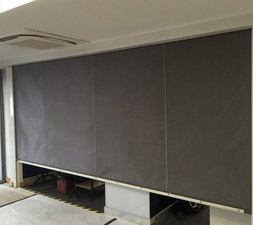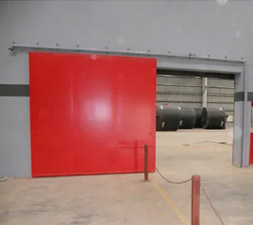Specifications, Standards, and key features
Fire safety is one of the most crucial aspects of modern construction, whether it’s a hospital, metro station, office building, or residential complex. Among the many safety installations, fire resistant doors play a critical role in protecting lives and property. These specially engineered doors not only withstand fire for a defined duration but also restrict the spread of smoke and flames, allowing safe evacuation.
In this blog, we’ll explore the specifications, standards, and key features of fire resistant doors.
1. Definition and Purpose
A fire resistant door FRD is a door assembly built to resist the passage of fire, smoke, and hot gases for a specified time. Its purpose is to:
- Provide safe evacuation routes.
- Contain fire within a compartment.
- Reduce damage to property.
- Help firefighters control the spread.
2. Fire Rating and Standards
Fire doors are classified by the duration of fire resistance they provide, usually tested as per IS:3614 (Part 2) and NBC 2016 in India, or international standards like BS 476 and EN 1634.
- 30 minutes (FD 30) – Common in residential and small commercial projects.
- 60 minutes (FD 60) – Used in corridors, staircases, and escape routes.
- 90 minutes (FD 90) – Required in high-risk areas like industrial units.
- 120 minutes (FD 120) – For critical applications such as refineries, data centers, metros, and hospitals.
3. Core Materials
The performance of fire doors depends on the infill core and materials used:
- Steel or Galvanized Iron Sheets (outer skin).
- Fire-rated core materials such as:
- Vermiculite boards
- Mineral wool
- Ceramic insulation boards
- Fire-retardant honeycomb structure
4. Construction Specifications
- Thickness: Typically ranges between 46 mm – 56 mm.
- Frame: Pressed steel or hardwood with intumescent seals.
- Shutters: Double skin sheet with reinforced stiffeners.
- Vision Panel (if provided): Made of fire-rated glass with tested glazing beading.
- Finish: Powder coating or polyurethane paint.
5. Hardware Requirements
All hardware used must be fire-rated:
- Hinges: Stainless steel ball bearing type.
- Locks & Latches: Tested for fire performance.
- Door Closers: Must ensure automatic closing.
- Panic Bars: Required in public buildings for emergency exit.
- Smoke Seals & Intumescent Strips: Expand under heat to seal gaps.
6. Testing & Certification
A genuine fire door must be:
- Tested at an accredited lab (e.g., ISI, CBRI Roorkee, NABL, HTB, etc.).
- Supplied with a test certificate mentioning the fire rating.
- Marked/Tagged with manufacturer details and rating.
7. Installation Guidelines
Even the best fire-rated door is ineffective if not installed properly. Some key guidelines are:
- Fixing with anchor fasteners into the wall.
- Gap between frame and wall filled with fire-rated sealant.
- Hardware fitted without drilling into the fire core.
- Regular inspection and maintenance.
8. Applications
- Metro Stations
- Hospitals & Laboratories
- IT Parks & Data Centers
- Shopping Malls & Airports
- Industrial Units & Warehouses
- High-rise Residential Buildings
Conclusion
Fire resistant doors are not just a regulatory requirement but a life-saving investment. By choosing doors that comply with NBC 2016, IS 3614, or equivalent standards, and ensuring certified hardware and professional installation, builders and owners can significantly enhance the fire safety of their premises.
At Sehgal Doors, we specialize in manufacturing and supplying tested & certified fire resistant doors, ensuring compliance with national and international standards.
For more details or to request a quotation, visit www.sehgaldoors.com. and +919891139441

















